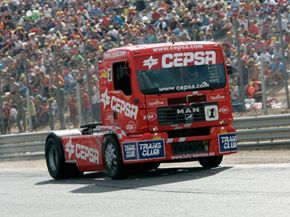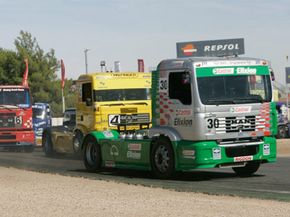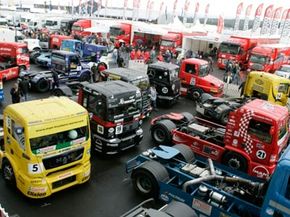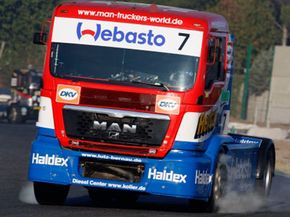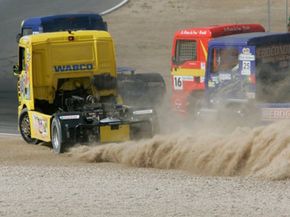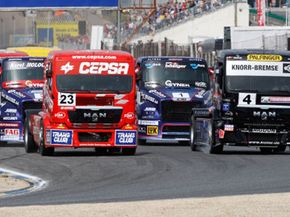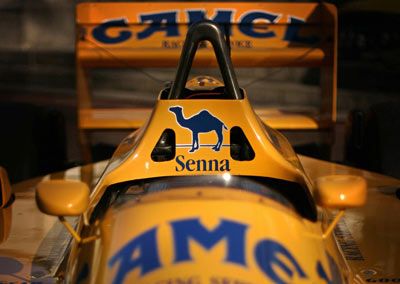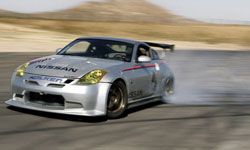America supposedly does things a bit bigger than the rest of the world. One case in point is monster trucks -- bigger tires, bigger engines, bigger noise; they're kind of like Texas on wheels and steroids.
Advertisement
In one specific area of trucking (or truck racing), however, the good old U.S. of A. may be beat. In Europe and other parts of the world, the kings of the road have become the kings of the tracks. Since the early 1980s truck racing has been a growing draw. Think of the truck delivering a trailer load of diapers to Wal-Mart thundering around a flat track at speeds of up to 100 miles per hour (161 kilometers per hour). And this isn't a road-weary traveler caked with sand and salt, but rather a slick, modified race machine on par with today's top NASCAR and Formula One machines.
Like American NASCAR racing, the super truck circuit grew from humble origins where drivers would pull off from their anticipated delivery, drop the load, race, pick up the load once again and deliver the cargo by the next business day. Rather than moving from the back roads and moonlight moonshine runs as early NASCAR drivers did, these trucks moved from hauling everyday goods to hauling, well, you know, around some of the more storied European and international race ways. Their drivers are much the same -- average guys with not-so-average dreams making a name for themselves in a sport that drew more than 200,000 cheering fans to each race during its hey day.
With the passage of time and the effects of shrinking economies super truck racing has transformed into simply truck racing. And while these leviathans are not likely to make it to United States shores anytime soon (at least as anything other than a video game), it's still better to be ready, because it may only be a matter of years before American race fans embrace the brash and behemoth reality of super truck racing. So, read on and be prepared to take a pole position in what may be the racing trend of the future.
Advertisement
